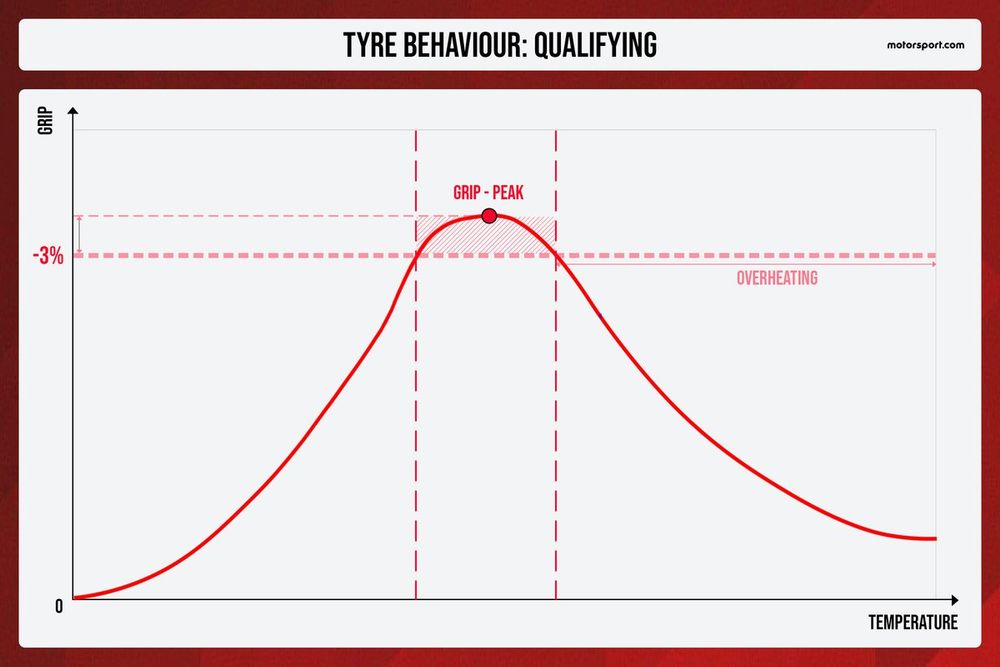If a driver can extract just one more tenth out of their tyres over a single qualifying lap, that can be the difference between getting knocked out in Q1 or Q2 or making it all the way through to the final shootout.
And further up in the fight at the front, such margins are defining whether drivers are getting stuck in a chasing pack battle or can enjoy some clean air to gun for a podium.
As Mercedes technical director James Allison said recently: “Around the part of the battle we’re fighting, a few hundredths can make a difference sometimes and a couple of tenths would make all the difference in the world.”
One of the critical factors in hitting or missing those hundredths or tenths is tyre preparation in qualifying – if you miss the window then your hopes are pretty much game over.
But the process of finding the peak performance is far from straightforward and it is one that drivers and engineers spend hours on grand prix weekends trying to better understand and exploit.
In an effort to try to help bring some insight to this area, Autosport spoke to Pirelli’s head of car racing and F1 Mario Isola to explain what elements are at play and why the target is such a hard one to reach.
“If we look at a graph, the grip of the tyre is on the vertical co-ordinates and the temperature is on the horizontal,” he said. “In the cold, any compound that is developed for motorsport has little grip. Instead, the grip increases as the temperature goes up. There is a curve that goes up until it reaches a peak, and then beyond that there will be a significant drop in grip due to overeating.”
Working out where this peak grip is delivered then allows teams to understand what the working range of the tyre is.
Isola added: “Once the peak of grip has been reached, at the highest point of the curve, the graph normally shows us a 3% area that we define as the ‘working range’. There is then a curve between two points that we try to make flatter and, above all, as wide as possible.
“Our goal is to give the drivers a tyre with a wide plateau, to ensure a bigger operating window.”
Pirelli used to declare in public the best working range for each compound, but that is no longer possible because there are so many more factors at play in defining performance.
Isola added: “The tyre usage window is highly influenced by a series of parameters that can significantly modify the data: we can start from the type of asphalt, or the…
Click Here to Read the Full Original Article at Autosport.com – Formula 1 – Stories…

